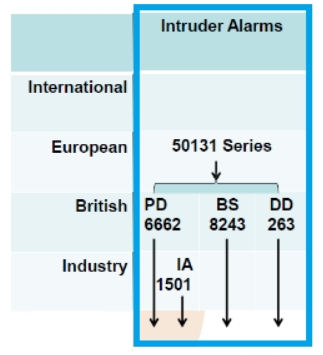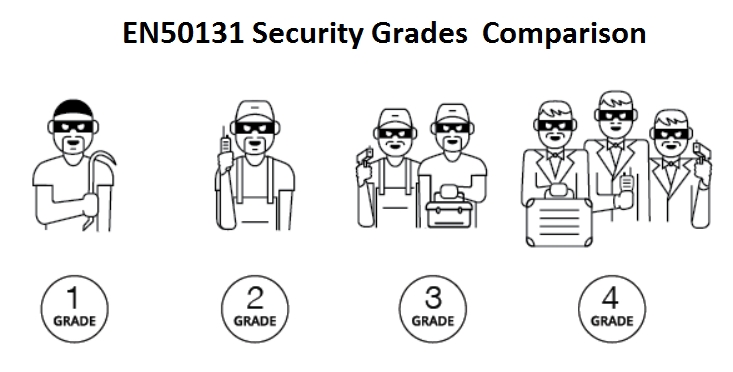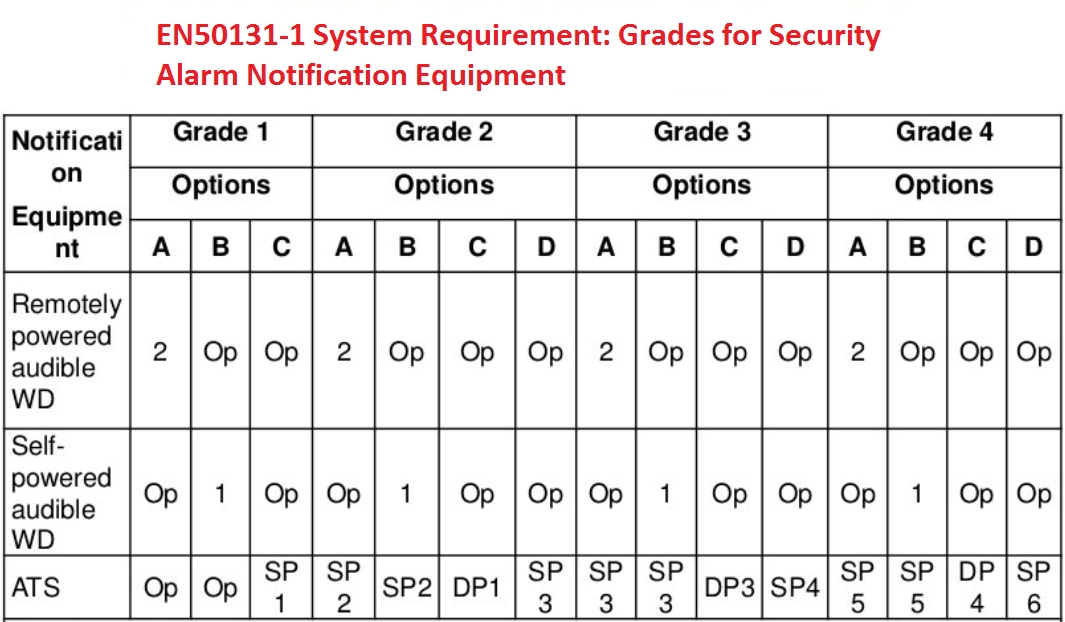What Are EN50131 Grade and Class for Intrusion Alarm System

Security systems are awarded compliance EN50131 certificates in Europe for its reliability that are referred to as grades. The security alarm devices are tested for by a third-party laboratory compliance with all types of rules, laws and requirements. When all the criteria are passed, then it can achieve the certification. Here we will discuss the variations between grades, its testing procedure and how the approval ensures product quality.
Licensed laboratories place the security device through a series of stringent EN50131 tests such as:
- Functionality
- Equipment protection against the weather element
- Resistance to mechanical tools
- Protection against EMC electromagnetic fields.
- Radio communication (if wireless design)
- Device operations
Then the observational results are recorded and reviewed by the testing lab. If all the desired results are achieved, then the organization certifies and provides a reliability grading to the equipment.

Comparison of Security Grades for Alarm System

A security system’s reliability depends primarily on its protection against fending off different types of tools and knowledge at the intruder’s disposal. A higher security system grade denotes a stronger and safer security system. However, grade 4 is rarely deployed in mass market and everyday use as it is top grade standard. For most high level deployment, Grade 3 is considered and only uses wired security systems. Thus, wireless security systems are mostly Grade 2 or grade 1.
Each grade is assigned based on the reliability of the security system:
Grade 1 – Very Low to Low Risk
The system withstands inexperienced intruders from break-in. Protects most obvious entry locations such as front door. This level is only suitable for places or rooms that don’t have valuables and are not susceptible to robbery and break-in.
Grade 2 – Low to Medium Risk
The system can withstand experienced attackers who posess special equipment such as electronic equipment. Protect doors, windows and other potential access points. It is suitable for an apartment, house or office.
Grade 3 – Medium to High Risk
The system can withstand professional attackers who possess electronic break-in devices. All possible entry points are under protection, including walls & ceilings. This level is suggested for use in for commercial establishments such as malls, offices, warehouse etc.
Grade 4 – High Risk to Very High Risk
The system is the highest level and designed to withstands sophisticated professionals with plans and high grade equipment. The system is designed for spaces or objects with very high value to protect against robbery, heist or terrorist attack.
Each device in a system is assigned with a security grade, then the security system as whole will be designated by the device that has the lowest grade. For example, a typical security system would consist of control panel hub, motion PIR sensor, siren sounder, smoke detector and door sensor. If say, sounder receives the grade 2 and every other devices are grade 3, then the whole system would still be considered as grade 2 certified. 
What are EN50131 Environmental Class for Security Alarm
The components need to meet one of the following environmental classes and defined accordingly:
Class I – Indoor
The environmental influences are mild indoor with a well-maintained temperature range between +5°C to +40°C
Class II – Indoor – General
The environmental influences are indoor with an unmaintained temperature range between -10°C to +40°C
Class III –Outdoor – Sheltered or indoor extreme conditions
The environmental influences are outdoor with intruder and hold-up system not fully exposed to the weather, or indoor with extreme condition. The temperature range is between -25°C to +50°C, with relative humidity of around 75%.
Class IV –Outdoor – General
The environmental influences are outdoor with intruder and hold-Up system fully exposed to the weather. The temperature range is between -25°C to +60°C, with relative humidity of around 85-95%.
For any projects or inquiry on security and intrusion alarm, please contact one of our specialists for more information.

